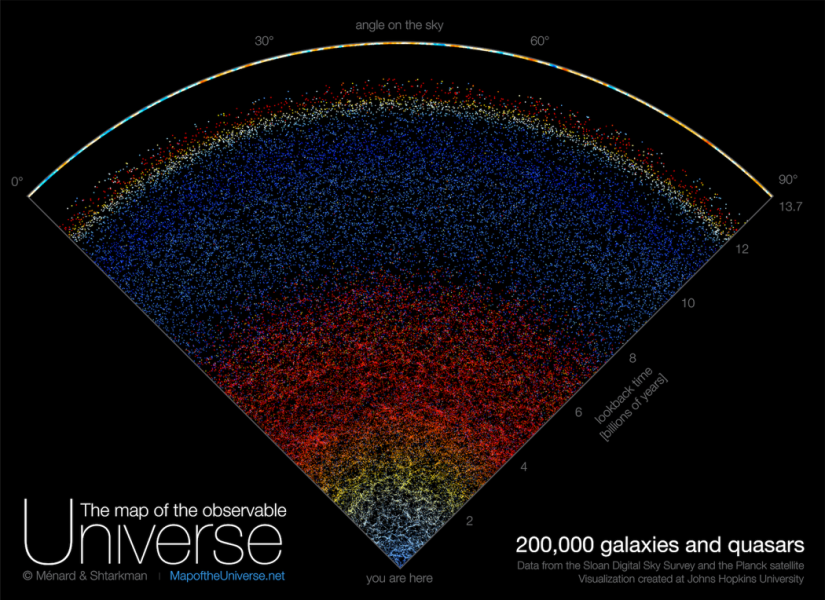Astronomers from Johns Hopkins University unveiled a first-of-its-kind map of the universe that allows users to scroll through the entire span of the known cosmos, from the Milky Way to the "edge of what can be seen."
The new map of the observable universe is a slice of the cosmos that combines over 20 years of data to showcase information previously only seen by scientists with "pinpoint accuracy and sweeping beauty."

A More Colorful, Interactive Map of the Universe
The Sloan Digital Sky Survey (SDSS) compiled the data mined for over two decades that astronomers use from Johns Hopkins University to create the interactive map, depicting the actual position and real colors of 200,000 galaxies. It is now available online and is also downloadable.
Professor Brice Ménard, the amp's creator, said in the university's press release that he was always inspired by astronomy pictures while growing and now it is time to create a new type of picture to inspire people.
He added that astrophysicists worldwide have been analyzing data for years, leading to thousands of scientific papers and discoveries. However, no one has taken the time to create a map that is scientifically accurate, beautiful and at the same time accessible to the public not just to scientists. They aim to show everyone what the universe looks like through the map.
The SDSS is a pioneering effort to document the night sky through the lens of a telescope based in New Mexico. The telescope was aimed at different locations night after night to capture the unusually broad perspective of the cosmos.
Ménard created the new map of the universe with the help of Nikita Shtarkman, a former Johns Hopkins computer science student. Each dot on the map is a galaxy, and each one of them contains countless stars and planets. One of these dots is the Milky Way galaxy where the Solar System and Earth reside.
The map is more colorful due to the expansion of the universe in which the farther they are, the redder they appear on the map. More so, the map shows the first flash of radiation emitted after the Big Bang event some 13.7 billion years ago.
What's in the Universe?
According to Live Science, the universe is the sum of all existence, including all matter, like stars and galaxies. It also includes all radiation and various forms of energy.
The universe is literally everything no matter where or when something exists, and even experiences. Nothing exists outside the universe because anything that exists is automatically a part of the universe.
Scientists' best understanding of the origins of the universe comes from the Big Bang Theory. Current observations also suggest that galaxies are moving away from each other and astronomers interpret this motion to mean that the universe itself is expanding. This means that the universe was once smaller, hotter, and denser in the past than it is today.
Einstein's general theory of relativity allows cosmologists to connect the contents of the universe to explain its expansion and calculate its age, which is estimated to be about 13.787 billion years old.
RELATED ARTICLE : Most Detailed 3D Map of the Universe Showcases 7.5 Million Galaxies Surveyed Using 5,000 Telescopes
Check out more news and information on Universe in Science Times.
© 2025 ScienceTimes.com All rights reserved. Do not reproduce without permission. The window to the world of Science Times.












